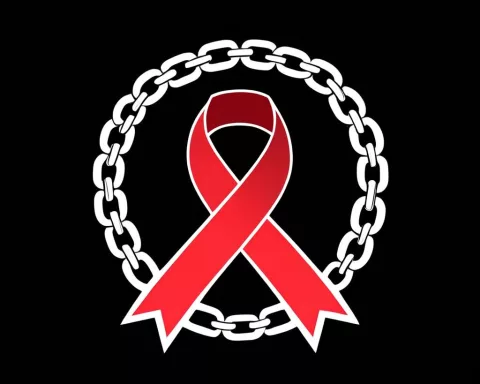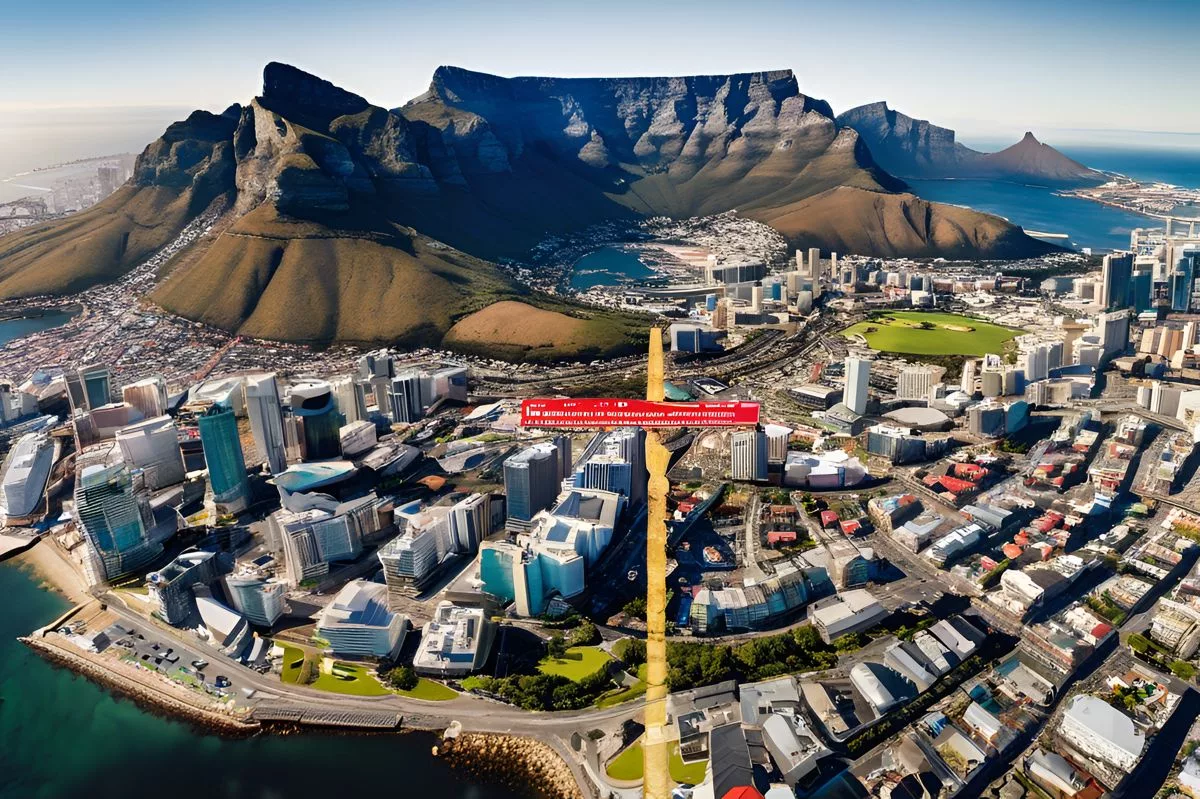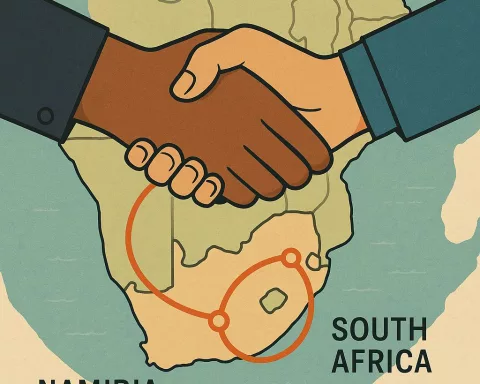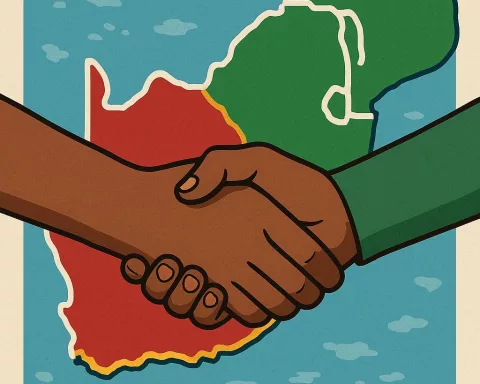Starlink is changing how sea rescues happen in South Africa by providing fast and reliable internet through satellites. This technology helps the National Sea Rescue Institute (NSRI) save lives by improving communication during rescue missions, especially in remote areas where it’s hard to connect. It’s not just about rescues; Starlink also promises to boost local economies by improving access to education and other important services. With this new connection, South Africa is on its way to a brighter, safer future for everyone.
How is Starlink transforming sea rescue operations in South Africa?
Starlink is revolutionizing sea rescue operations in South Africa by providing reliable, high-speed satellite communication. This technology enhances the National Sea Rescue Institute’s ability to coordinate rescues effectively, improves response times, and supports socio-economic development in underserved areas, ultimately saving lives.
Revolutionizing Communication for Life-Saving Missions
The National Sea Rescue Institute (NSRI) in South Africa stands on the cusp of a technological transformation with its adoption of SpaceX’s Starlink, a cutting-edge satellite broadband service. This development is poised to significantly enhance the NSRI’s critical life-saving operations, while also offering broader benefits to the South African populace. At the core of this advancement is Elon Musk’s revolutionary satellite internet network, which is already reshaping digital landscapes worldwide. For South Africa, especially for an essential service like the NSRI, the implications are both profound and far-reaching.
Currently, Starlink is in active discussions with the South African government to launch its services in the country. This collaboration highlights South Africa’s strategic importance as Africa’s largest and most technologically advanced economy. President Cyril Ramaphosa himself has underscored this potential during recent dialogues, pointing out the prospects for substantial economic and operational progress. For the NSRI, an organization dedicated to saving lives along South Africa’s vast coastline and inland waters, Starlink offers a significant enhancement in operational capability. Dr. Cleeve Robertson, the CEO, envisions that the satellite technology will significantly improve communication, safety, and socioeconomic advancement across the nation.
Starlink’s potential is particularly crucial for the NSRI’s efforts in remote and underserved areas. Rescue missions often face challenges with delayed or disrupted communications, which can hinder rapid and effective response. The introduction of Starlink’s high-speed satellite internet promises to bridge these gaps by offering reliable, real-time communication capabilities. This connectivity allows rescuers to coordinate operations more efficiently, thereby improving safety measures for individuals engaged in water activities.
Economic and Social Impact Beyond Rescue Missions
Beyond immediate operational enhancements, the introduction of Starlink is expected to create broader economic and social impacts across various sectors. Dr. Robertson notes significant potential benefits for industries such as tourism, fishing, shipping, and education. For a country still dealing with the legacy of apartheid and striving for equitable development, leveraging technology for digital inclusion and innovation represents a critical opportunity.
The reach of Starlink into South Africa’s rural regions represents another transformative aspect of this initiative. Many of these areas lack traditional internet infrastructure, leaving communities disconnected from essential services like education and healthcare. Brett Ayres, NSRI Operations Director, emphasizes how Starlink could empower these communities by enhancing connectivity. This improvement would grant access to a wealth of resources, thereby elevating living standards and fostering economic growth. It also enables the NSRI to expand its educational initiatives on water safety and refine its emergency response strategies, thanks to the resilience of Starlink’s communication network.
The impact of Starlink’s implementation extends beyond immediate rescue operations, acting as a catalyst for growth and innovation across various sectors and industries. The connectivity enabled by Starlink is central to South Africa’s digital transformation agenda. This initiative aligns with governmental goals, ensuring that technological advancements translate into tangible socio-economic benefits for all citizens.
Overcoming Challenges and Expanding Horizons
Globally, Starlink has made significant progress with a network of approximately 5,500 satellites serving around 2.6 million users. Its expansion into Africa, with Zimbabwe recently joining the list of countries accessing its services, highlights a growing footprint on the continent. However, certain local regulations in some regions present challenges that Starlink must navigate; in South Africa, compliance with black ownership requirements is crucial to addressing historical inequities.
This ongoing dialogue between Starlink and the South African government, including discussions between President Ramaphosa and Elon Musk, reflects a mutual recognition of potential benefits. The vision of a digitally connected South Africa, capable of more effectively tackling emergencies and driving economic development, deeply resonates with the NSRI’s mission. By enhancing the NSRI’s capabilities, Starlink contributes directly to the nation’s disaster management strategies and socio-economic development goals.
The prospect of integrating Starlink into the NSRI’s operations underscores a pivotal moment for South Africa. It symbolizes a convergence of advanced technology and humanitarian effort, with the potential to redefine the country’s landscape. As Starlink continues to expand its reach, the possibilities for innovation and growth appear limitless, offering a brighter future for the communities served by the NSRI and beyond.
“`markdown
How is Starlink transforming sea rescue operations in South Africa?
Starlink is revolutionizing sea rescue operations in South Africa by providing reliable, high-speed satellite communication. This technology enhances the National Sea Rescue Institute’s ability to coordinate rescues effectively, improves response times, and supports socio-economic development in underserved areas, ultimately saving lives.
What benefits does Starlink offer beyond rescue missions?
Beyond immediate operational enhancements, Starlink is expected to create broader economic and social impacts across various sectors such as tourism, fishing, shipping, and education. This initiative represents a critical opportunity for digital inclusion and innovation, enabling communities to access essential services like education and healthcare.
How does Starlink improve communication during rescue missions?
Starlink offers high-speed satellite internet which ensures reliable, real-time communication capabilities. This connectivity allows rescuers to coordinate operations more efficiently, overcoming challenges related to delayed or disrupted communications that can hinder swift and effective responses during emergencies.
What role does the South African government play in the Starlink initiative?
Starlink is actively discussing the launch of its services with the South African government, emphasizing South Africa’s strategic importance as Africa’s largest and most technologically advanced economy. These discussions involve regulatory compliance and mutual recognition of potential benefits for both the government and Starlink.
How does Starlink address challenges in underserved areas?
Starlink targets remote and underserved areas that often lack traditional internet infrastructure. By enhancing connectivity in these regions, it empowers communities with access to essential resources, thus elevating living standards and fostering economic growth.
What is the long-term vision for Starlink in South Africa?
The long-term vision includes integrating Starlink into the NSRI’s operations, enhancing the country’s disaster management strategies, and contributing to socio-economic development goals. This initiative symbolizes a convergence of advanced technology and humanitarian efforts, offering the potential for a digitally connected South Africa capable of tackling emergencies and driving growth.
“`












